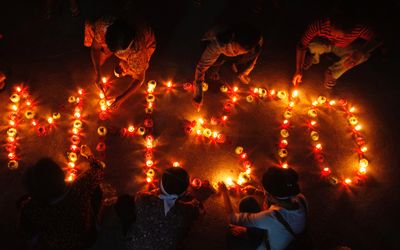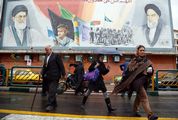Real-time trackers aim to avoid repeat of MH370 mystery
by Agency Staff,
2016-03-09 11:06:56.0
MONTREAL — Two years on from the disappearance of Malaysia Airlines flight MH370, the United Nation’s (UN’s) aviation agency announced new requirements on Tuesday, in a bid to avoid a repeat of a mystery that has perplexed investigators.
The jet vanished on March 8 2014 en route from Kuala Lumpur to Beijing with 239 passengers and crew onboard, mostly Chinese and Malaysians, leaving distraught relatives still grasping for answers.
On the sombre anniversary, the council of the International Civil Aviation Organization (ICAO) in Montreal adopted new measures that require aircraft to have tracking devices that can transmit location information at least once a minute when in trouble, effectively providing real-time updates.
Other new measures, also introduced in response to the MH370 mystery, include extending the duration of cockpit voice recordings to 25 hours, considerably longer than the current norm.
The new requirements "will now greatly contribute to aviation’s ability to ensure that similar disappearances never occur again," said Olumuyiwa Benard Aliu, president of the ICAO council. The changes will take effect between now and 2021.
Separately, the Malaysia-led international team of aviation experts set up to investigate the aircraft’s disappearance issued an annual progress report, but the brief statement had no new insights on what caused the jet to vanish.
Authorities believe the Boeing 777 detoured to the remote southern Indian Ocean and then plunged into the treacherous waters.
A wing fragment confirmed to be from MH370 was found on an island thousands of kilometres from the search area last year, the first proof that the aircraft indeed went down.
AFP

Residents of Boeung Kak Lake light candles to spell ‘MH370’ during a Buddhist prayer ceremony in Phnom Penh, Cambodia. Picture: REUTERS
MONTREAL — Two years on from the disappearance of Malaysia Airlines flight MH370, the United Nation’s (UN’s) aviation agency announced new requirements on Tuesday, in a bid to avoid a repeat of a mystery that has perplexed investigators.
The jet vanished on March 8 2014 en route from Kuala Lumpur to Beijing with 239 passengers and crew onboard, mostly Chinese and Malaysians, leaving distraught relatives still grasping for answers.
On the sombre anniversary, the council of the International Civil Aviation Organization (ICAO) in Montreal adopted new measures that require aircraft to have tracking devices that can transmit location information at least once a minute when in trouble, effectively providing real-time updates.
Other new measures, also introduced in response to the MH370 mystery, include extending the duration of cockpit voice recordings to 25 hours, considerably longer than the current norm.
The new requirements "will now greatly contribute to aviation’s ability to ensure that similar disappearances never occur again," said Olumuyiwa Benard Aliu, president of the ICAO council. The changes will take effect between now and 2021.
Separately, the Malaysia-led international team of aviation experts set up to investigate the aircraft’s disappearance issued an annual progress report, but the brief statement had no new insights on what caused the jet to vanish.
Authorities believe the Boeing 777 detoured to the remote southern Indian Ocean and then plunged into the treacherous waters.
A wing fragment confirmed to be from MH370 was found on an island thousands of kilometres from the search area last year, the first proof that the aircraft indeed went down.
AFP





















Change: -0.32%
Change: -0.49%
Change: -1.78%
Change: -0.18%
Change: 0.08%
Data supplied by Profile Data
Change: -0.22%
Change: 0.21%
Change: -0.32%
Change: 0.00%
Change: 0.51%
Data supplied by Profile Data
Change: 0.04%
Change: 0.04%
Change: -0.21%
Change: 0.15%
Change: 0.00%
Data supplied by Profile Data
Change: -0.28%
Change: 0.00%
Change: 0.00%
Change: -0.71%
Change: -0.76%
Data supplied by Profile Data